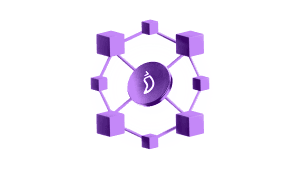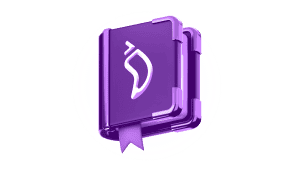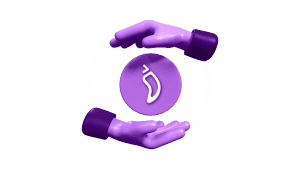Programmable money is digital money with built-in rules. Unlike cash or regular bank transfers, it can be set to move only under certain conditions. For example, a company can program payments to go out only after a job is done. Or parents can send money to their kids that works only for school items.
This kind of money is powered by smart contracts and blockchain. It helps people and businesses handle money in faster, smarter ways, with less need for middlemen.
It’s still early days, but programmable money could change how we think about spending, saving, and sending funds.
The Evolution of Money – From Cash to Code
Money has come a long way. It started with physical cash like coins, notes, and bartering. Then came digital money such as online bank transfers and mobile payments, which made things faster and more convenient.
Now we are entering a new phase called programmable money. This is money that does not just hold value, it also follows rules. You can set conditions like “Pay this person only if they deliver a product” or “Send rent on the first of every month.”
Thanks to digital transformation, we can now add smart logic in money. That means money can move, pause, or act automatically with no need for banks or middlemen to approve every step.
This shift is already happening through blockchain and smart contracts. It is changing how people and businesses think about payments, rewards, and trust in transactions.
What Makes Money “Programmable”?
Programmable money is digital money that can follow rules set in advance. These rules decide when, how, or why the money moves.
This is made possible through blockchains and smart contracts — bits of code that carry out actions automatically when certain things happen.
For example:
- A band can receive automated royalties every time a song is played
- A seller only gets paid once a buyer confirms delivery (conditional payments)
- A bonus might be paid out after 30 days (time-locked rewards)
All these are called programmable transactions, because they don’t need a person to press a button. The rules are already set.This approach is already used in crypto and Web3 spaces. If you want to see it in action, check how Ethereum smart contracts work.
Blockchain and Smart Contracts – The Tech Behind Programmable Money
At the heart of programmable money are two key tools: blockchains and smart contracts.
Smart contracts are bits of code that live on a blockchain. They follow simple rules. For example, “If this happens, send money.” No middleman is needed. Once active, they run exactly as written.
Blockchains like Ethereum and Chiliz Chain help make this possible. They record every action, keeping things open and secure. When a smart contract is added to the blockchain, it stays there. No one can change it later.
This setup allows money and value to move automatically whether it’s paying someone, sending rewards, or managing access to a service.
It’s called trustless execution because you don’t need to trust a person, just the code. These tools are the building blocks of decentralized finance (DeFi) and other Web3 systems where control is shared, not held by a single group.
In short, blockchains give the base, smart contracts add logic, and together they bring money to life in a new way.
Use Cases – Why Programmable Money Matters
Programmable money is not just a tech idea. It’s already solving real problems in everyday life.
Here are a few real-world examples:
- Scheduled salary payments: Companies can set up smart contracts to send salaries automatically on specific dates. No delays. No mistakes.
- Subscription models via tokens: Instead of using cards or apps, people can hold a token that gives them access to content or services. When the token expires, so does access.
- Loyalty rewards that expire or evolve: Brands can send rewards that grow over time or fade if unused. This makes reward systems more active and personal.
- Voting incentives in governance or fan ecosystems: Communities and fans can earn small tokens when they vote on key decisions, like new features or club activities.
All of this happens without long steps, middlemen, or confusion. That’s why it helps reduce friction and adds clear, fair rules to how money and rewards move.
Real-time finance, token utility, and use-case-driven design are making digital money smarter, faster, and more connected to how people actually live and spend
Programmable Money on Chiliz Chain – A Sports and Entertainment Perspective
Imagine a world where Fan Tokens do more than just give access or voting power. With programmable money, these tokens could become smarter and more active.
Here’s how it could play out on Chiliz Chain:
- Automated fan rewards: Fans could receive tokens or points based on match results. For example, if your team wins and you hold a Fan Token, a reward could land in your wallet automatically.
- Time-sensitive voting rights: Voting could open only for a set time, like the 24 hours before a match, and then close. This keeps things fair and focused.
- Unlockable digital experiences: Tokens could carry built-in logic that opens access to behind-the-scenes content or player chats after certain games or events.
Over time, Fan Tokens could carry event-triggered utility, reacting to team actions or schedules. That means more meaningful, real-time engagement between fans and their favorite clubs.
With smart Fan Tokens and engagement automation, clubs could build stronger, more active communities while keeping fans close to the action.
Is Programmable Money the Future of Digital Finance?
Programmable money is more than just digital cash. It’s money that follows clear logic, it moves only when certain rules are met. This brings new control, speed, and creativity to how we send or use value.
The key benefits are easy to see:
- Faster payments
- Better security
- More freedom in how money works
- Custom setups for things like fan rewards or digital memberships
In Web3, where fans, creators, and communities want more direct ways to connect, programmable money plays a big role. It fits perfectly in fan-focused ecosystems where timing, loyalty, and interaction matter.
As more people and platforms try it out, programmable money could become a core part of how we move value in the digital world.











